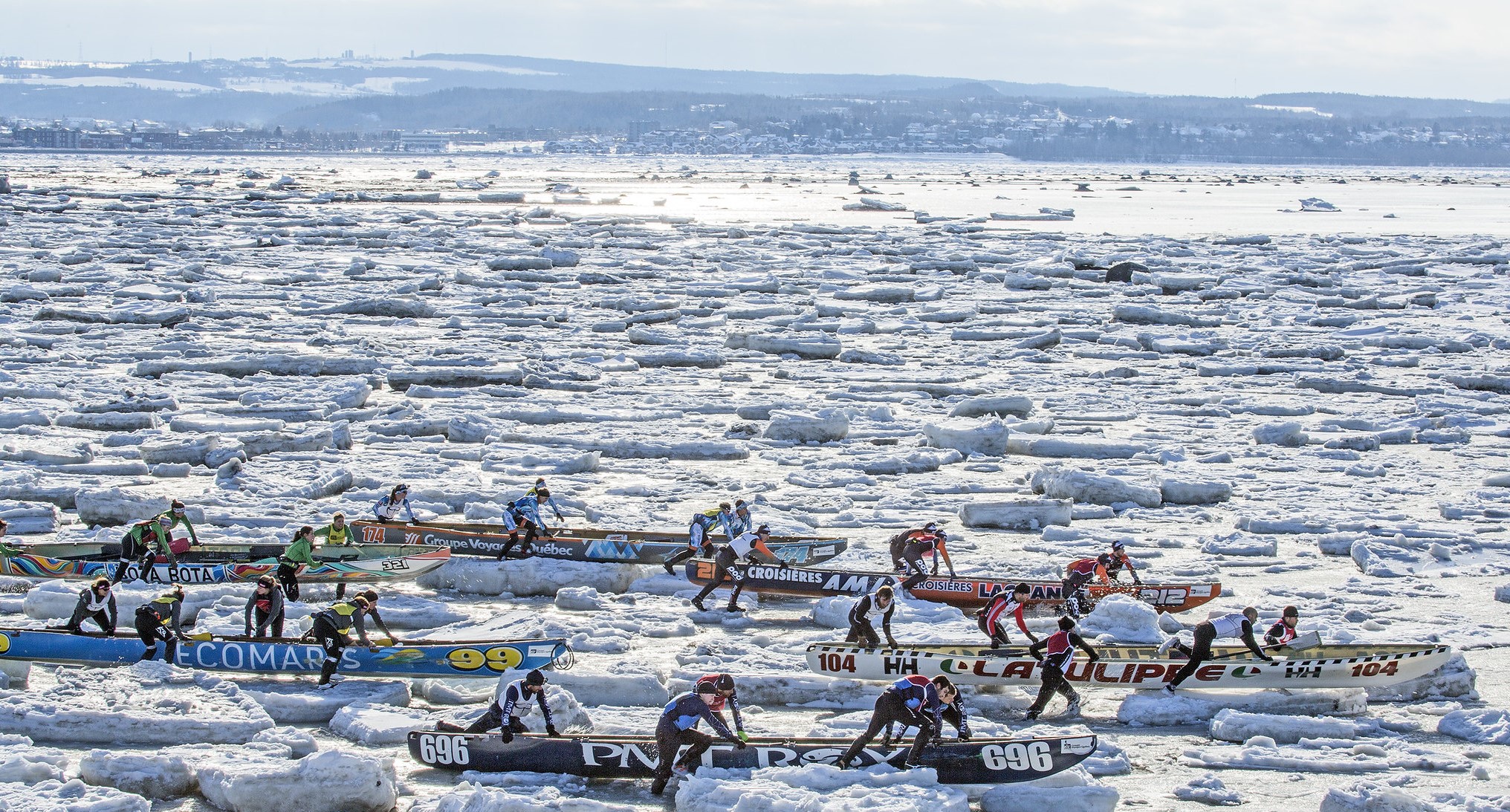
From soccer to ice canoeing: getting to know the St. Lawrence River at -30°C

@Claude Côté
Julien Robitaille is an employee at SLGO. Before being hired as a data scientist here, he developed a passion for ice canoeing during his master in oceanography at UQAR. We took a moment to chat with him to learn more about this unusual sport.
Discovering the river like never before
During his master studies in Rimouski, while Julien heads out to play indoor soccer games, some of his friends, barely wearing anything warm, are heading towards the ice cover of the St. Lawrence river. One day, out of curiosity, Julien decides to follow them and opens the door to the unknown world of ice canoe racing, a competitive sport he has practiced the last five years.
“The river is so beautiful, there is no other activity that allows you to experience the river with such proximity and intensity. I love the river, and I can’t wait for a -30°C day for the ice to start to form.” shares enthusiastically Julien, a smile on his lips, well aware that very few Quebecers share his winter dream!
Once a traditional form of transport, ice canoeing is a competitive sport, originally practiced exclusively by men, and has been composed of mixed teams only since the middle of the 80s. A team includes five teammates: four rowers and one helmsman, or coxswain – or simply coxie – the person at the back of the canoe in charge of steering.

@Claude Côté
The dynamic environment increases the amount of adrenaline experienced by the teammates. There are no two races alike, and the path is always unique, forged by the elements : currents, tide, ice characteristics – with heights that can reach up to 2 meters! – as well as the presence of slush…
There are no two races alike.
Each path is unique, forged by the elements.
Expert coxies with years of experience often make all the difference in analyzing the route to take and helping their team win. Flying over the ice, one foot out of the canoe trotting, can be rewarding, with speeds reaching 20km/h on perfectly smooth ice. However, if the ice turns out less than ideal, speed drops and then, it is endurance and bruce force that will drive the canoe through slush and shards of breaking ice.
At the mercy of weather conditions
The river is not only beautiful, it is also very powerful… and it can quickly become dangerous. Three forces can make it particularly difficult, or rather exciting for the crew, to navigate! Those forces are the currents, the tide, and the winds.
Facing these three elements, it’s possible to feel overwhelmed by the power of the river, and quickly see your canoe drifting from its course.
Facing these three elements, it’s possible to feel overwhelmed by the power of the river, and quickly see your canoe drifting far away from the planned path, to the point where the team is incapable of coming back. While being a rare situation, an emergency radio call to the rescue teams, during organized races, or the coast guard in other cases, will ensure a safe return to the land.
“I’ve never done a more intense sport than ice canoeing, although it is the understanding of the ice that is one of the most important aspects of this sport. It is simply a one-of-a-kind experience.” summarizes Julien, before inviting us to watch a race or even hop on board during a training session.
Digital tools to be better prepared
Since he was hired at SLGO, Julien has worked on the development of the Navigation 2 application, a map tool showing in real time the conditions necessary for navigation, whether it’s for sailing, kayaking, or… ice canoeing. The integration of tide, currents and wind data, among others, in the same web tool optimizes the planning step of these recreational activities. The ice canoeing race season of 2022 will be the first opportunity for Julien and his teammates to test the application!

Screenshot of Navigation 2 dashbord.
You can also become a beta-tester here!
| A little bit of history: from traditional transport mean to competitive races A locomotive tradition before anything else, transport by ice canoe predates the arrival of Europeans in Québec. It ensured the crossing of people and goods, between islands and the coasts. In the 17th century, it was the only way to cross the river between Québec city and Lévis, when there was insufficiently strong ice cover. Steamboats eventually replaced this traditional means of transport, which has survived as a competitive sport ever since. More information on the history of the Ice Canoe (French only After the first edition, organized in 1894 as part of the Quebec Winter Carnival, the race between the cities of Québec and Lévis was organized every year around mid-February, from 1955 to today! Now, seven competitions exist along the St. Lawrence river. To find out about upcoming races, see the Calendar of the Association des coureurs en canot à glace du Québec (French only). |
 | Anne-Sophie Ste-Marie |

